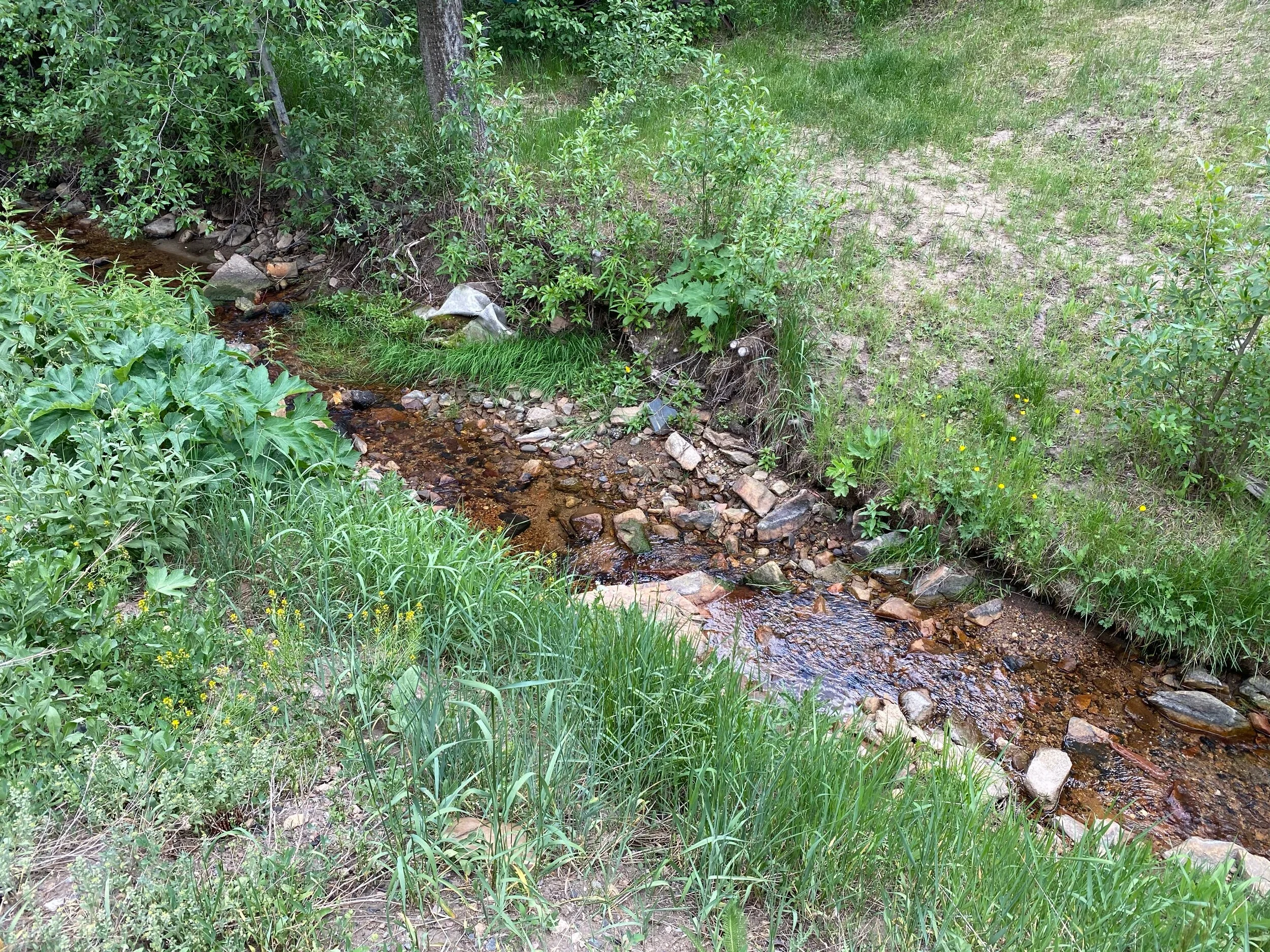• 0:06 - 0:31 All right. I'm on County Road 72 looking at this Joe are known project. Here is a small what looks like a ATV trail here that is coming from a neighboring property. It would sure be nice to be able to access our job site from up here that would require some.
• 0:31 - 1:00 Permission from the neighbors. We have a property survey stake there in the distance right there. And there's another one way down there kind of pink right there. There's Sarah, but if we could somehow access our construction vis-à-vis this small ATV track that could give us.
• 1:01 - 1:30 An easier access with our construction, but it looks like we're I'm standing on the neighbor's property over here and then would be up in there somewhere and that would be something we would need to figure out what the neighbor looks like. They have a teepee. Maybe they're nice who the heck knows. I don't know that this would necessarily save us or gain us anything in terms of efficiency of the project. But this is definitely an easier approach in terms of.
• 1:31 - 1:37 Incline and if we could come down here that might be a easier way to go about it. • 1:41 - 1:54 And then we're going to come over the hillside here and look and see what we're dealing with. There's a lot of big questions here. They will need to get answered.
• 1:55 - 2:25 There's another property stake here. And then here's another one here and I believe we're looking at right up in here as the location for the STA and the tank and we would be piping with sewage ejection pump up the hillside here and we would need a nice big deep trench coming up this Hillside. We want to get this below frost.
• 2:26 - 2:49 This is a north-facing slope. So this is going to be a really cold Hillside in the winter time. We're going to want to get this the trench with that sewage ejection pump, which will have liquid in it all the time to be nice and deep and or do something along the lines of heat tape and insulation or sleeving and that may be a better. • 2:50 - 3:06 That may be the way to go in addition to getting the pipe nice and deep as deep as we can probably something along the lines of you know, four to five six feet deep somewhere in there.
• 3:07 - 3:37 This looks like a hillside with a decent amount of soil on it to me just with this amount of grass and vegetation growing and I don't see a whole lot of rock sticking out. There is one rock rock rock outcropping there as well as their so there's a chance we could get into some Bedrock here and we will need to be making a pretty significantly deep cut for the STA on the uphill side of our dig because of the slope being what it is if we're going to be 12 feet wide we. • 3:37 - 4:02 I want to look at doing something along the lines of it automatic Distributing valve with intermediate trenches that have I believe six feet of Separation in between each one and then we can run lateral trenches across the Hillside and not have to get down as deep as we would have to in order to do one solid 12 foot wide bed that would allow us to basically keep each of those trenches more shallow.
• 4:03 - 4:33 So that's a consideration there. I'd like to look at this with Google Maps and see and verify that we will be doing the the field in the tank up here basically as opposed to dealing with this much steeper Hillside here and trying to get our system installed on the hillside here. So let's see landmarks could be basically probably this out.
• 4:33 - 5:03 Rock outcropping right here if we can be uphill from that we should be able to see that on the satellite view will still have a look at that and make sure that we can actually get our are filled up up here on on the tabletop here versus having to put it here on this really steep slope. You know, I'm curious to know are 50-foot setback off of this Creek is that's going to be across the ground or is this horizontal distance or is it a diagonal distance?
• 5:04 - 5:09 Additionally we're going to have to come and here's another this is just a. • 5:10 - 5:23 A ribbon here that blew off. So additionally we're going to have to come across the creek. What kind of permission are we going to need to come across the creek with our sewage ejection pump?
• 5:28 - 5:45 And what kind of freeze and frost mitigation are we going to be looking at with coming across the creek as well? And if we're just if we're just running a pipe cross the creek, you know, I would like to explore something along the lines of filling this Creek.
• 5:47 - 6:11 Gully with class M riprap, which is basically 18 inch average riprap or possibly a combination of classroom riprap with VTC and then doing a 24-inch Culvert going across the creek and that would need to be cleared. I believe with the Army Corps of Engineers. • 6:15 - 6:18 Or the Jefferson County.
• 6:19 - 6:24 Water district for consideration of the floodplain. • 6:26 - 6:37 So that's another question that we need to figure out and yeah, so what is the engineered?
• 6:38 - 7:08 Recommendation for keeping this pipe from freezing. That's the big question for me and then coming up this if we do have to access our construction zone vis-à-vis this road. We're going to have to basically cut a road in the side of this hill side and climb the mountain at a diagonal this way and then access our work Zone up in there.
• 7:08 - 7:38 The top just so that we don't have to go straight up the hillside. We may be able to go straight up the hillside if we can kind of fill this in a little bit and get this to be not quite as steep right here at the bottom, but most likely we're going to want to run a diagonal a diagonal cut going across in which case we may be jeopardizing the health of those two trees up there and it may be better to just take those down and plan on removing those so there's a lot of. • 7:38 - 7:39 Ian's here.
• 7:44 - 7:51 What's the right approach we would need to restore this road once we got done with construction and do a rear vegetation effort? • 7:54 - 8:05 As well as possibly applying some topsoil and doing that will be challenging as well. So a lot of challenges here.
• 8:06 - 8:35 But that's that's what we that's what we enjoy. So that's what will will be ready for and here's the our old tank that will need to be abandoned will cross the creek here. Ideally, we would be able to put in a culvert here and basically bury a portion of the creek underground with some rip rap rock surrounding that Culvert is 24 inches the right did it diameter. Do we need a bigger?
• 8:36 - 8:45 Culvert based on the flow rates of this Creek. I don't know what it is when it's high where it's at. Now. This is spring most of the. • 8:47 - 8:53 Most of the waterways are full right now. So maybe that's as deep as it's going to get. That's all we got for now.

